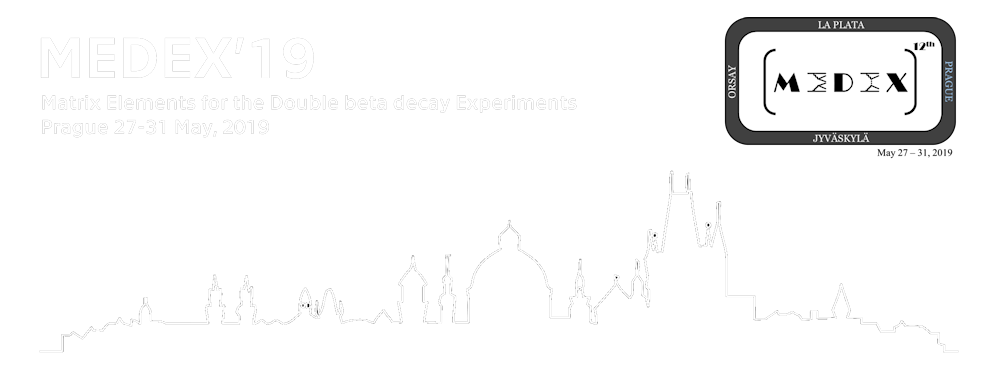Speaker
Dr
Oksana Polishchuk
(Kyiv Institute for Nuclear Research)
Description
By comparing decay rates of neutrinolessdouble electron capture and electron capture with positron emission one could distinguish mechanism (due to light neutrino exchange or right-handed currents admixture in the weak interaction) of the neutrinoless double beta “minus” decay if observed. However, even the allowed two-neutrino mode of electron capture with positron emission is not observed yet. The nuclide 106Cd is a promising candidate fortheexperimental investigations of the double beta “plus”decays due to its high energy release 2775.39(10) keV andrelatively high isotopic abundance 1.245(22)%. An experiment to search for double beta processes in 106Cd is in progress with the help of 106CdWO4 crystal scintillator (enriched in 106Cd to 66%) in coincidence with two large volume CdWO4 scintillation detectors in close geometry at the Gran Sasso Underground Laboratory. The time resolution of the set-up was analysed,andthe methods of pulse-shape discrimination of alphaand gamma(beta) events was applied to estimate theradioactive contamination of the crystal and to reduce the background counting rate.The possible double beta decay processes and the background components have been simulated by a Monte Carlo procedure. The sensitivity of the experiment is approaching the theoretical predictions for the two-neutrino electron capture with positron emission in 106Cd: lim T1/2 ~ 4×10^21 yr (the best previous limit was established in the previous stage of the experiment as T1/2 >1.1×10^21 yr, while the theoretical predictions are in the region of half-lives 10^20-10^22 yr).

